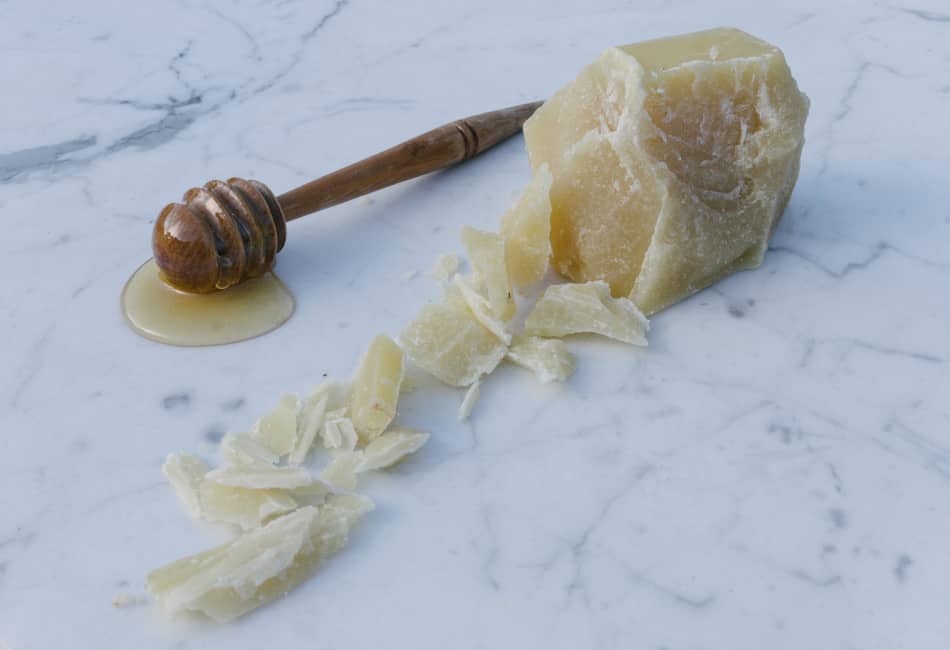Beeswax is a natural wax produced by honey bees in the beehive. It has been used for centuries to make candles, polish furniture, and seal food containers. But can you use beeswax on marble?
You can use beeswax on marble to help polish the surface of the marble to offer protection against staining, dirt, and grime. Besides being a non-toxic and chemical-free product, you can also use beeswax on marble to protect the natural luster on the marble surface.
Using beeswax on your marble also comes with some downsides of which the most common one is that beeswax is not particularly great for high traffic areas of the marble surface.
To learn the details about the pros and cons of using beeswax on marble, keep reading this article.
The Pros Of Using Beeswax On Marble
There are a lot of benefits to using beeswax on marble. Let’s take a lot at some of the major benefits of using beeswax on marble surfaces.
1. Beeswax Can Be Used To Polish Marble Surfaces
There are some benefits of using beeswax on marble. For one, it can be used to polish the surface as well as seal in any dirt and oils that may have accumulated from long-term use.
The best thing about using beeswax to polish marble is that when it is used to polish marble surfaces it can actually add a little bit of shine to the surface. Using beeswax can be a great idea if you want something that will provide an immediate shine.
It is also great as it offers long-term benefits such as protecting the surface of the marble from dirt or oil stains in addition to keeping it looking glossy without having to reapply anything over time or using harsh chemicals like waxes made primarily with petroleum products.
To polish the marble surface using beeswax, you can rub the beeswax on a cloth and then gently buff the surface. The wax will bead up if it is applied to an oily or dirty area of the marble.
Beeswax also makes for great furniture polish because unlike other polishes, it doesn’t leave any dark residue behind, which means less work in removing stains from tables and chairs after they have been used for many years.
2. Beeswax Offers Marble Long-lasting Protection
As hinted before, beeswax is going to offer marble surfaces long-lasting protection against many different elements.
Marble is particularly susceptible to water, which can cause it to etch and get damaged over time from the acidity in fruits, vegetables, rainwater, some cleaning products, or other liquids.
Beeswax will help this issue because of its natural resistance against moisture. Additionally, beeswax also offers a layer of protection when applied on marble surfaces that are exposed to high heat levels by making it more difficult for them to become stained with grease or oils.
This wax has been used in furniture polishes since ancient times as well, but today you will find many people using it on their marble, granite, and other natural stone countertops.
Mainly also for their additional added benefits of being a bit easier to clean up after spills than oil-based products without leaving behind any dark film residue like most other wax products.
3. Beeswax Can Be Used To Maintain The Natural Luster Of Marble Surfaces
Marbles come with a unique cluster and surface quality which makes them unique from other stones such as granite. The natural luster of marble is one main reason why it has been a popular choice for countertops for many many years.
The quality and beauty of the surface depend heavily on how well you maintain your marble surfaces, with regular sealing being important to maintaining the natural appearance over time.
This will help to eliminate having to worry about staining or damaging any part of the stone. One way that many people are choosing to do this these days is by using beeswax instead.
This wax not only leaves behind its own pleasant smell but also protects against abrasions from everyday use while making it more difficult for them to become stained with grease or oils.
And if you must know, grease and oil stains show up quite noticeably on a shiny surface like marble because there isn’t any matte color to help them blend in.
4. Beeswax Has Natural Antibacterial Properties
Another inherent benefit of using beeswax on your marble surfaces is that it has natural antibacterial properties.
This means that it will not only create a protective barrier but actually clean the surface of your marble and help prevent odors from developing.
This is because bacteria cannot survive in an environment with those levels of purity. This makes beeswax great for protecting surfaces like marble from bacteria that can cause damage if left untreated.
Beeswax as well has some pest control properties due to its antibacterial properties so using beeswax in areas where bugs are constantly present like kitchens can help keep them away too!
One commonly known type is called carnauba wax, which comes from palm tree leaves and is often used on carnauba leather to make it shine like glass or for food service areas where there are high volumes of traffic such as restaurants.
It’s also very effective at repelling water droplets so while you may have been taught never to use oil-based products on stone surfaces, this one can be applied without any worries about slippery flooring.
5. Beeswax Is Natural And Non-Toxic Substance
Beeswax is a natural and safe substance that you can use to seal your marble. It’s also an excellent option for those who want to create their own polishes because it doesn’t contain any toxic chemicals, unlike other popular household cleaners like bleach or ammonia.
Beeswax is found in beehives where the bee larvae produce wax as food; this residue accumulates on surfaces of the hive and eventually becomes beeswax.
The term “bees-wax” may also refer to all forms of naturally produced insect secretions that are used similarly – including from bumblebee species (bumblebee honey), hornets and wasps, caterpillars, spiders, and more.
What I love about beeswax is that it is a great choice for sealing marble because it doesn’t contain any of the toxic chemicals and it’s safe for humans and the environment.
The best part is, you do not have to apply it too frequently. Beeswax only needs to be applied once every six months or so depending on the degree of wear and tear on your marble surface.
The Cons Of Using Beeswax On Marble
1. Beeswax Is Not Appropriate For High Traffic Areas
Beeswax is not appropriate for use on marble that sees a lot of traffic, such as in an entranceway or kitchen. The wax will get rubbed off and it can be slippery if you do spill something.
This is because when you apply beeswax on those high traffic areas of the marble, it can wear off easily and leave an unattractive appearance.
2. Beeswax Is Not A Long Term Solution
Beeswax is also not a long-term solution for marble maintenance. Beeswax does help to extend the life of your surface but applying it too often over time will cause more dirt buildup which means more maintenance in future applications.
If you want long-term solutions with less maintenance then there are other options available such as felt pads, stone sealant, and marble polishers.
You should also avoid beeswax if your marble furniture like vanity, countertops, tabletops, or seats have intricate carvings because the waxy residue will build up over time which can make these details less pronounced and difficult to see.
3. Beeswax Application Could Get Very Messy
When applied incorrectly, beeswax becomes very messy and difficult to remove.
Some people use a cloth to apply the wax over their marble, but this can quickly become an issue if you do not have the necessary skills.
The best way to avoid making a mess while using beeswax on your marble is by first covering it with something like freezer paper or plastic wrap and then pouring the warm melted wax onto that surface before spreading it evenly.
You also want to make sure you work in small sections at a time so that you don’t put too much pressure on any one area of the marble which could cause damage if pushed down hard enough.
Additionally, there are different types of beeswax for specific purposes such as dishwasher safe wax or furniture protection- these should not be used for polishing because they will leave a residue on your marble.
You can also use a steel wool pad to remove the wax from the marble after it has hardened, but make sure you have a container to put it in once you are finished.
Tips On Using Beeswax On Marble Surfaces
- Always use the non-yellowing beeswax for your marble surfaces. Never use any types of wax that are not specifically for marble surfaces, because they will leave residue on your surface and create an uneven finish.
- Never put too much pressure on anyone area of the marble.
- Use a steel wool pad to remove excess wax from your surfaces after they have hardened.
- Use a container to put the excess steel wool in after you are finished using it.
- Clean your marble before applying any type of wax.
- Always make sure there is no dust or dirt left behind before applying your beeswax.
- You can find various Beeswax product at Amazon.

